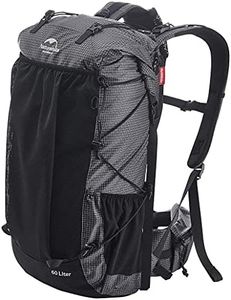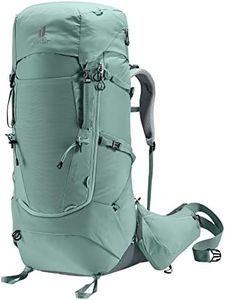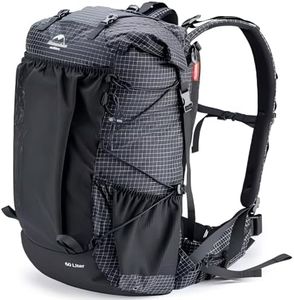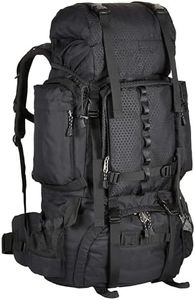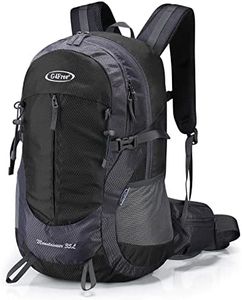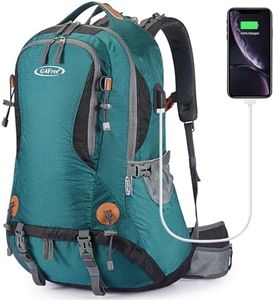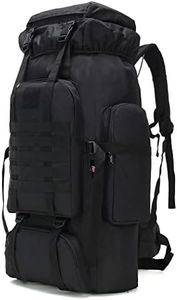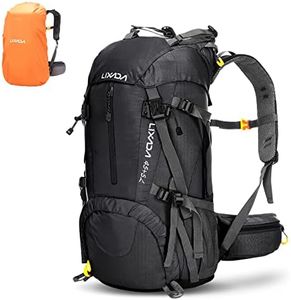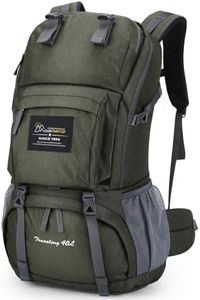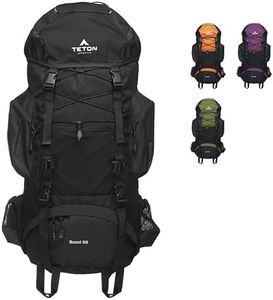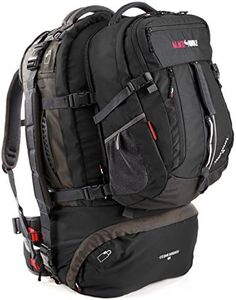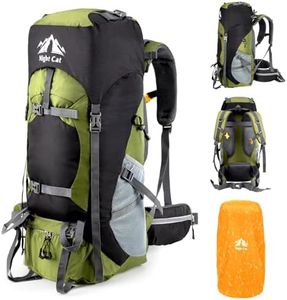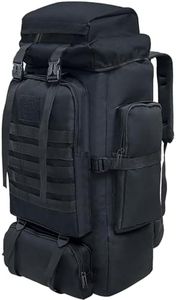We Use CookiesWe use cookies to enhance the security, performance,
functionality and for analytical and promotional activities. By continuing to browse this site you
are agreeing to our privacy policy
10 Best Budget Backpacking Backpacks
From leading brands and best sellers available on the web.Buying Guide for the Best Budget Backpacking Backpacks
Choosing the best budget backpacking backpack is all about matching your needs with the right features. Think about how long your trips typically are, what kind of gear you carry, and your comfort preferences. Focus on finding a backpack that balances weight, size, durability, and organization without unnecessary extras you don’t need. Trying the pack on, if possible, can make a big difference to ensure it fits your body well and feels comfortable over long distances.Capacity (measured in liters)Capacity refers to how much space is inside the backpack, usually measured in liters. This is important because it determines how much gear, clothing, and supplies you can carry. Smaller capacities (30-50 liters) are best for short trips or people who pack very light, while bigger capacities (50-70+ liters) suit longer or multi-day adventures where you need to carry a tent, sleeping bag, and extra food. To choose, think about the length of your trips and how much you typically bring—if you’re only out for weekends, smaller is better, but for longer trips or if you struggle to pack compactly, go a bit bigger.
WeightThe weight of the backpack itself matters because you will be carrying it along with all your gear. Lightweight packs make your journey easier, especially on longer hikes. Very light backpacks may save you energy, but sometimes sacrifice comfort or durability. Heavier packs might provide more padding or features but add to your overall carry weight. Consider how much comfort versus weight matters to you: if you prioritize comfort and extra support, a slightly heavier pack might work; if you want to move fast and light, look for the lightest option that still feels comfortable.
Fit and AdjustabilityFit means how well the backpack matches your body size and shape, especially the length of your torso, while adjustability refers to straps and harnesses that can be tweaked for comfort. This is crucial because a poor fit can lead to sore shoulders or back pain over time. Packs often have adjustable straps for the shoulders, hips, and chest—sometimes even an adjustable back panel. To pick the right fit, measure your torso length and hip size, and check if the pack can be adjusted to match. Try it on loaded with some weight, if possible, to see if it remains comfortable.
Frame TypeBackpacks have either an internal frame, external frame, or no frame (frameless). The frame gives the pack structure and helps distribute weight across your back and hips. Internal frames are most common and work well for most users by keeping the load close to your body. External frames allow for better airflow and are good for heavy, bulky loads but are less popular now. Frameless packs are very light but best only for ultralight minimalist hikers. Your choice comes down to comfort, how much you plan to carry, and your preference for simplicity or structure.
Padding and VentilationPadding is the cushioning on shoulder straps and hip belts, while ventilation features help keep your back cool. More padding can make the pack more comfortable, especially if you’re carrying heavier loads, but can make the backpack warmer and sometimes heavier. Ventilation features like mesh panels or special back designs are useful if you hike in warm climates or tend to sweat a lot. Choose padding levels based on how sensitive you are to pressure and how much load you expect to carry, and look for ventilation if staying cooler is important to you.
Number and Type of CompartmentsThis refers to how the backpack is organized—how many compartments, pockets, and access points it has. Organization helps you keep gear tidy and easy to reach. Some packs are very simple, with just one big space, while others offer lots of pockets and zippers for different items. If you like everything in its place and want quick access (like a front pocket for snacks or a bottom compartment for a sleeping bag), look for a more organized design. If you go minimalist or don't mind digging around, a simple setup will do.
Durability (Material and Build Quality)Durability depends on the material the pack is made from and how well it is put together. More durable packs use thick, tightly-woven fabrics and strong stitching, which last longer but can weigh more. Less durable, lighter fabrics can save weight but may wear out faster, especially if you’re rough on your gear. Think about how tough your trips are—if you bushwhack or travel off trail a lot, pick a tougher pack, but if you're mostly on established trails and travel light, less rugged materials might be fine.
Water ResistanceWater resistance is about how well the backpack shields your gear from rain. Some packs have water-repellent coatings or even include a rain cover. This is important if you often hike in wet climates or want to protect electronics and clothing. If you expect rain or wet conditions, make sure your pack offers at least some resistance or plan to use a separate backpack rain cover.
